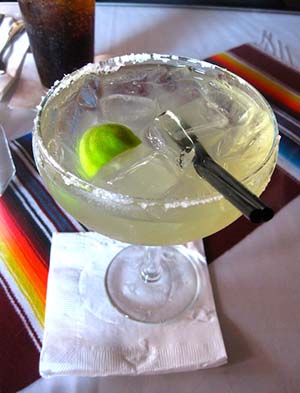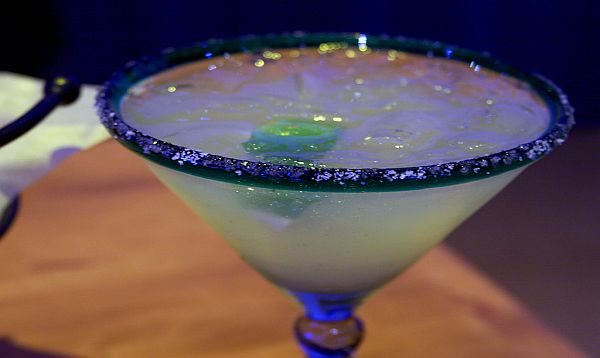Mexico - They say when you have lost something you should start looking where you last saw it. However, in this case I think I should start at the beginning. I have discovered when it comes to most mixed alcoholic beverages that there is no agreement as to when a given mixed drink was born. It is certainly possible that the ingredients are part of the reason for this lack of solidarity among those who were the early imbibers.
The Margarita shares this early confusion. Some say the Margarita was created in a bar south of Tijuana by Carlos ‘Danny’ Herrera, whose obituary in 1992 states that it was he who created the Margarita. Danny Herrera opened the Rancho La Gloria restaurant just south of Tijuana in 1935 with his wife.
His family claims that he invented the drink around 1938 for one of his customers; a showgirl and sometime actress who called herself Marjorie King. According to this story Marjorie was allergic to all booze except tequila. Marjorie? Margarita? Hmmmm... have you ever heard of someone allergic to all alcohol except one? Preference maybe, but allergies? I cannot give this story much credence.
One could argue, and some have, that the Margarita is simply a tequila Side-car (with lime instead of lemon), a cocktail that had been in circulation for at least a decade prior to the Margarita’s ascent in popularity.
The story I prefer, and maybe it is because I am from Texas and spent most of my adult life in Dallas, is the one about a wealthy Dallas socialite named Margaret ‘Margarita’ Sames. This Dallas native was known for throwing lavish parties at her Acapulco holiday home and she credits herself (surprise, surprise) with creating the drink in 1948. I know it is a little difficult picturing a Dallas socialite behind a bar morphing into a mixologist. But, I am willing to overlook this small incongruity.
As the story goes, Margarita and her husband, Bill, invited some friends from Dallas to visit them in Acapulco. Their cliffside hacienda was under construction, so they borrowed a home from a local friend, with luxurious grounds and a pool with a swimming bar. Margarita wanted to make a refreshing drink that could be enjoyed poolside before lunch. “After all, a person can only drink so many beers, or so many Bloody Marys, or screwdrivers or whatever,” she said. “I wanted to make up a new drink.”
Margarita said she had initially tried to invent a rum drink, inspired by her visits to Cuba, but with no success. Tequila was her favorite spirit, so she turned there. Having tasted and enjoyed the orange-based French liqueur Cointreau, she decided to combine the two. At the time, she said, there were no mixed drinks using tequila.
 |
As she experimented with various combinations of tequila and Cointreau, they were either too sweet or too sour. Eventually she found a recipe that suited her, with lime juice used to balance the alcohol and a light dusting of salt on the glass rim to add the finishing touch.
The first mention in print of a Margarita cocktail is in the December 1953 issue of Esquire magazine where it states simply that, "She’s from Mexico, Señores, and she is lovely to look at, exciting and provocative."
Regardless of the story one chooses to adopt as the truth, I do believe it was created either by an American or by a Mexican bartender for an American. Have you ever seen a Mexican drink a Piña Colada, a Tequila Sunrise, a Manhattan, or a Martini, just to name a few mixed drinks? They seem to prefer their drinks in a glass not specifically designed and named for it and definitely without an umbrella.
Unlike the Mexicans, the Canadians and Americans seem to love their mixed drinks. In Canada the Caesar seems to be the #1 drink. Coinciding with 40th anniversary of the Caesar, a petition was launched in 2009 in the hopes of having the Caesar named Canada’s official mixed drink.
In Calgary, Mayor Dave Bronconnier celebrated the drink’s anniversary by declaring May 13, 2009, as Caesar Day in the city. But the Caesar is another story, including how all Canadians seem to agree on the name of the mixologist who created the drink and the date on which it was created.
The US is the number one tequila market in the world, larger and more important to the industry than Mexico. Granted the US has three times as many people. Nevertheless, it was the most popular drink in 2010, representing 18 percent of all mixed drink sales in the US. When you get to my part of the country, Margarita consumption peaks accounting for 35 percent of sales.
According to industry sources, over four million Margaritas are sold in the US every day. With a population of over 300 million it is obvious some people are not pulling their weight. Those good citizens who do pull their weight include those living in Alabama, Florida, North Carolina, and Texas. Being from Texas I have done my best to maintain our ranking and know a good Margarita when I taste one.
Although there may not be an agreement on the origin of the drink, everyone seems to agree on the ingredients: Tequila, Cointreau, and lime juice. Some may vary their portions, but not the contents. So, when I moved to the land of Margaritaville, I planned on having my share of this famous drink. But, to my surprise they do not know how make a Margarita in the part of Mexico I live in.
Depending on the bar or restaurant in which you order your Margarita, with or without salt, you will usually get a variation of a Paloma. The official ingredients for a Paloma are: Tequila, lime juice, Squirt or Fresca.
Sometimes you get a variation of a Tequila Daisy: Tequila, lime juice, sugar, Grand Marnier, and seltzer. Instead of seltzer you find Squirt or Fresca, and of course there is no Grand Marnier. Margarita is the Spanish word for daisy, so the confusion maybe understandable to some degree.
It seems odd to be in México and have to tell the bartender how to make a Margarita, but that is what I do when I order one. Maybe if I am here long enough and visit enough restaurants and bars, your grandchildren can have a real Margarita when they come to visit you here.


